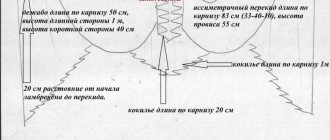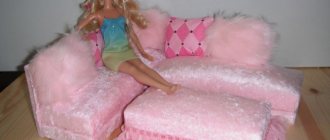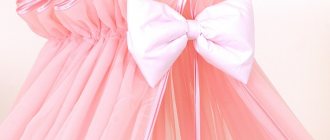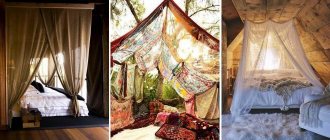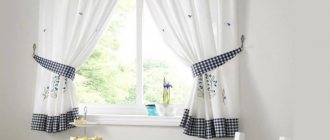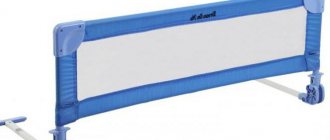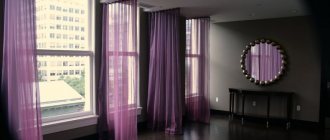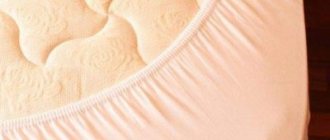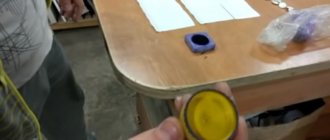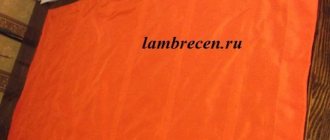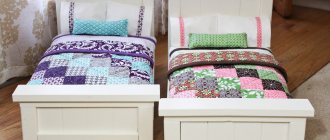From a historical point of view, such decor was sewn for a practical purpose. The design of the bedroom was not given much attention, but they tried to make the room as comfortable as possible. The valance was used as a kind of curtain (skirt) that hides caskets, chests or other things important to the owners.
Antique beds were made high. Sleeping at this level is comfortable, since the heat usually lasts for a long time in the upper part of the room. Therefore, the “skirt” was made of dense materials so that there was no draft during sleep.
The embroidery motif was varied. They embroidered amulets for newlyweds and for the cribs of small newborn children. Sometimes a geometric pattern of symbols or family history was applied. Features of this decor:
- multifunctional;
- practical;
- easy to sew the product yourself;
- long service life.
How to secure a sheet: choosing holders, clips, clamps
There are several options for how to secure a sheet to a mattress so that it does not slip.
Elastic, adjustable holder with metal clip
The bed linen holder is perhaps the most versatile and durable fastening element for sheets that has been invented to date. Bed sheet holders have various configurations, of which the most common are two-pointed and three-pointed.
Double clamps consist of an elastic band of various colors with a pair of metal or plastic clip tips. The clips attach to the sides of the sheet and create gentle, adjustable tension. The elastic band on such clamps can stretch up to 30-150 cm, depending on their original size.
A set of double holders is suitable for additional fastening of the sheet
The triple holder has an additional elastic module with a clip. This allows you to attach a corner, which significantly improves the aesthetic appearance of the bed.
Adjustable Triple Sheet Holders
Modern use
Use is coming back into fashion. In modern times, it fits well into the interior of children's rooms or large bedrooms. Delicate shades will aesthetically highlight a teenage girl’s room.
As an integral decorative element, the valance is found in
classic
style
Light or matte colors, decorated with floral prints, are noticeable in the Provence style. Sometimes you come across country options with dark shades and rough fabric. Plain ones are used in high-tech style. Strict models with geometric angularity are characteristic of minimalism or modernism.
It serves not only the function of decoration. There are practical models with sewn-in visible or hidden pockets. They are convenient for storing small items, books, napkins.
Sometimes necessary medicines or devices are stored in the pockets.
How to sew a bed valance?
Anyone who knows how to sew at least a little can easily cope with this task. For those who are not good at tailoring, a simple method will do.
You need to take old, unnecessary bedding. Cut it into strips with a large margin of length and width. If the valance is with folds, the length of each strip needs to be multiplied by 2 or 3. Let's say we have a bed 180 by 200 cm. This means that the length of the frill will be 580 cm in total. If we make it draped or pleated, we will need stripes with a total length 12 meters.
The parts are assembled directly on the bed and secured with pins. You can immediately gather the fabric or lay folds and secure them with needles.
DIY bed valance
Then you need to cut off the excess and, if necessary, make marks and sign the details. After this, the pattern elements are removed and measured.
“Finish” fabric is purchased according to size, and cutting is done. The parts are laid out again on the bed, the folds are secured with pins. Next, you need to make an estimate and sit down at the sewing machine.
If you don't have a machine, you can do without it. Using special adhesive tape and an iron, the edges of the fabric are processed. The parts are fixed directly to the base of the bed using double-sided tape, pins or something else. There is no need to wash the valance often, so this method is quite good.
DIY bed valance without sewing
I don't understand how to attach it.
There is a canvas, for example 45 cm by 6 m (assembled with an elastic band) and?
How they are attached with a full canvas inside the side, and not outside:
Maybe it's all about the design? Or maybe they are sewn in separate pieces? In general, I have a brain rupture!)) and I only found this option))))
Models
When choosing, they are determined by the type of model. Common types:
- Strict. For sewing, smooth fabrics mixed with cotton or polyester are used. The model is characterized by counter folds that are stitched at the corners of the bed. A strict option is suitable for a classic style that takes a modern direction.
Strict valance for a draped bed. The model stands out with a large number of smooth folds. Light fabrics are used in the manufacturing process: silk, chiffon, tulle. Decorated with lace, ruffles, bows. The drapery looks gentle and aesthetically pleasing. Suitable for decorating a room in Provence or country style.
Drapery Pleated. This option differs from the previous one by strictly highlighting the folds. For self-sewing, make clear drawings so as not to disturb the symmetry of the folds. To prevent folds from smoothing out, heavy fabrics are used for sewing: chenille, velvet, suede. Emphasizes the elegance of a room in a classic or vintage style.
Pleated valance
Models by design:
- as one with the coverlet. Covered over the bed. You can sew the product yourself: the valance is sewn to the bedspread.
One-piece option
- removable decor in the form of a skirt. The valance is attached to the bed or mattress frame using rope, elastic, loops, Velcro or tape.
Removable “skirt”
However, not every model is made from a material that matches the color palette of the interior. The right choice depends on taking into account important nuances. Otherwise, the valance will not last long or its texture will not fit into the design of the room.
Handy devices that hold the sheet on the bed
If you do not have the opportunity to purchase factory-made fasteners for holding sheets, you can use improvised devices. They are not reliable enough, but they will help if the need arises. They can be simple and even unexpected things:
- clothespin holders (“crocodiles”) from curtains or small office clips. Take 4 or 6 pieces for each side and attach the edges of the sheet to the mattress;
The rings from the clothespins must be unfastened so that they do not cling to the material.
- elastic bands or soft ribbons sewn on each edge of the fabric at an equal distance from the corner of the mattress;
- a sheet tucked far under the mattress on all sides;
- fabric valance made with a sewn-in thick elastic band. It is put on over the sheet, pressing it along the perimeter of the sleeping place;
- adhesive tape, buttons, loops.
Stationery clips and clothespins from curtains tear the material, especially thin ones. Their use is often not recommended.
It happens that the product is attached to the mattress with pins. But there are a number of disadvantages:
- they are difficult to unfasten every time before changing bed linen;
- they can tear the coating at the attachment points;
- It is easy to prick yourself with such a pin.
How to properly sew a zipper into trousers, master class (instructions with pictures)
Materials and tools:
- sewing machine;
- trousers with a one-piece valance (codpiece) and finished side, step and middle seams before the start of the codpiece (see photo below);
- a rectangle of fabric for the hem (I take the fabric from which the trousers were cut, as it is thin and pleasant to the body);
— zipper;
- thread, scissors, tailor's pins, ruler, tailor's chalk
Processing the zipper, codpiece and slope:
Step 1. Cut out the slope. On the fabric we draw a rectangle with width = valance width x 2 = 10 cm, height = valance length = 19 cm. We round the bottom corners.
Cut out:
Fold in half , inside out:
Overcast the edge:
Step 2. On the front side of the trousers, mark the middle seam line:
For WOMEN'S TROUSERS, on the LEFT side, draw a line parallel to the middle seam and passing from it at a distance of 1 cm closer to the outside of the valance.
Fold it inside out and baste it .
Step 3 . We place a zipper under the resulting allowance so that the teeth are visible. Secure with tailor's pins.
Step 4. Place the edge under the zipper so that the outer long edges of the edge and the zipper coincide, and the upper edge of the edge coincides with the waistline of the trousers. Let's baste.
View from the back side:
Grinding
Step 5. Fold the halves of the trousers face to face so that the middle seam lines match. We sew the right side of the zipper tape to the right valance , ONLY TO THE VALVE, NOT TO THE PANTS. (I remind you that here we are looking at how to sew a zipper into women's trousers; if you need to sew a zipper into men's trousers, then vice versa.)
From the front side, processing the codpiece at this step looks like this:
The white lines are the lines of the middle seam of the trousers.
Step 6. From the wrong side, sew the outer edges of the valance pieces
Step 7. Processing of the codpiece continues. Mark a line on the front side.
Step 8. We lay a finishing stitch according to the line . We secure the bottom with a short zig-zag seam .
This completes the processing of the codpiece.
This is what a zipper looks like, sewn into trousers with a one-piece codpiece, in the finished product, after attaching the belt:
In this article, we talked about what fasteners for trousers can be, found out what a codpiece, slope, valance are, and looked in detail at how to sew a zipper into trousers with a one-piece codpiece (valance). I tried to explain in detail so that processing the codpiece yourself would not cause you any difficulties. Easy sewing for you.
Removable gathered valance
This valance can be easily removed without dismantling the bed. One part of the Velcro tape is sewn to the sheet cover or bedding, and the second to the valance. In addition, securing the valance in this way prevents it from moving on the bed.
- Material:
- decorative fabric;
- sheet cover or bedding;
- fabric for edging strip;
- Velcro tape.
Color and pattern
A brightly colored skirt is a versatile choice. If you choose a light color such as white, pink, yellow or another pastel, make sure the bed skirt is made of heavy fabric to capture enough light.
A valance is a great place to display an interesting design, print, shapes, motifs, patterns or texture. It can complement or contrast with other fabrics in the room.
Design options
There are two design options for these decorative elements:
- It looks like a single blanket , laid on top of bedding or placed on the base of the crib under the mattress.
- It is a “skirt” with elastic, rope, tape or Velcro. It is put on the mattress or on the bed frame itself after the bed is made.
The first design option is used if the side panels of the frame are not very high, and the base of such furniture is located almost at the same height as the top line of the frame. A cloth with a valance is spread on the base, and a mattress is placed on top.
If the side panels of the frame are large and the mattress is partially or entirely contained in the frame, a “skirt” is used. A one-piece bedspread with valance can be used for a variety of bed options.
History of appearance
In ancient times, the sleeping bed was made much higher - this is understandable: the closer to the ceiling, the warmer the air. Thus, unoccupied space appeared under it for various household utensils. Grandmothers, for example, constantly hid chests or unnecessary kitchen utensils there. Naturally, this approach is not aesthetically pleasing and they tried to cover it up with something, for example, a decorative curtain. This is how the valance appeared, or in another way such a curtain is called a “skirt”.
Therefore, this bedroom decoration was found in every home in ancient times. Over time, this approach began to become a thing of the past, as the height of the beds decreased, and the body began to look more modern and elegant. However, the vintage past for women has not gone away; it has remained as a tradition, so it was not allowed to fade away completely. And now such decoration has become fashionable again.
Why buying an orthopedic mattress is not enough: properties of an anatomical bed
An orthopedic mattress is present in every third home today. But not everyone knows that the base on which it is placed must also be ergonomic. Only in this case is a person able to assume a physiologically correct position. If you choose a suitable bed, it will improve the properties of the mattress, extend its service life and have a positive effect on your well-being.
The orthopedic design has the following useful qualities:
- Ensures the correct position of the spine, preventing the development of osteochondrosis, arthritis, arthrosis.
- Helps a person relax and have a good rest.
- Prevents the mattress from sagging, increasing rigidity.
- Prevents back pain.
- Extends the life of the mattress, as it creates normal air exchange underneath it.
- Suitable for every room, regardless of its design style.
Beds with orthopedic bases differ in size, color and shape. The buyer chooses exactly what suits him.
Texture
Made from a heavy textured fabric, the valance will retain its shape and look new for years. You will only need to periodically remove it for washing. Materials that work well in this case:
- chenille,
- velvet,
- faux suede,
- Matelasse.
About other bedding set details for bed decoration
Models
When choosing, they are determined by the type of model. Common types:
- Strict. For sewing, smooth fabrics mixed with cotton or polyester are used. The model is characterized by counter folds that are stitched at the corners of the bed. A strict option is suitable for a classic style that takes a modern direction.
- Draped. The model stands out with a large number of smooth folds. Light fabrics are used in the manufacturing process: silk, chiffon, tulle. Decorated with lace, ruffles, bows. The drapery looks gentle and aesthetically pleasing. Suitable for decorating a room in Provence or country style.
- Pleated. This option differs from the previous one by strictly highlighting the folds. For self-sewing, make clear drawings so as not to disturb the symmetry of the folds. To prevent folds from smoothing out, heavy fabrics are used for sewing: chenille, velvet, suede. Emphasizes the elegance of a room in a classic or vintage style.
Models by design:
as one with the coverlet. Covered over the bed. You can sew the product yourself: the valance is sewn to the bedspread.
Additional lifehacks
It is better to prepare the items and necessary components of the work in advance. So, it makes sense to prepare yourself for the fact that you will have to iron a lot. Irregularities often form in wrinkled fabric, which results in poor stitching.
The principle is based on the precise framing of the bed. Often such borders are called “skirts”, and designers understand what we are talking about. It is not necessary to use an elastic band or garters. modern needlewomen choose Velcro. The main thing is that when fastening the product, it does not harm the mattress or other items of linen sets. They do not need to be fastened together, they are combined temporarily, and then successfully unfastened.
Don't limit yourself in design. Let one bed have several “skirts”. They will require care, but it is not difficult. They are stored together with the laundry and taken out if necessary. They are easy to sew and use. But it is better to immediately make an optimally suitable design, rather than alter it many times.
Fantasy really has no limits here. A needlewoman can sew a unique frame, or crochet it, etc. There are a lot of options. If you want something to decorate your bed, you will want something that is already on sale, ready-made textiles and decor. There are now enough products to stop worrying about what you don't know how to do and get great products. They will decorate any room.
Source
